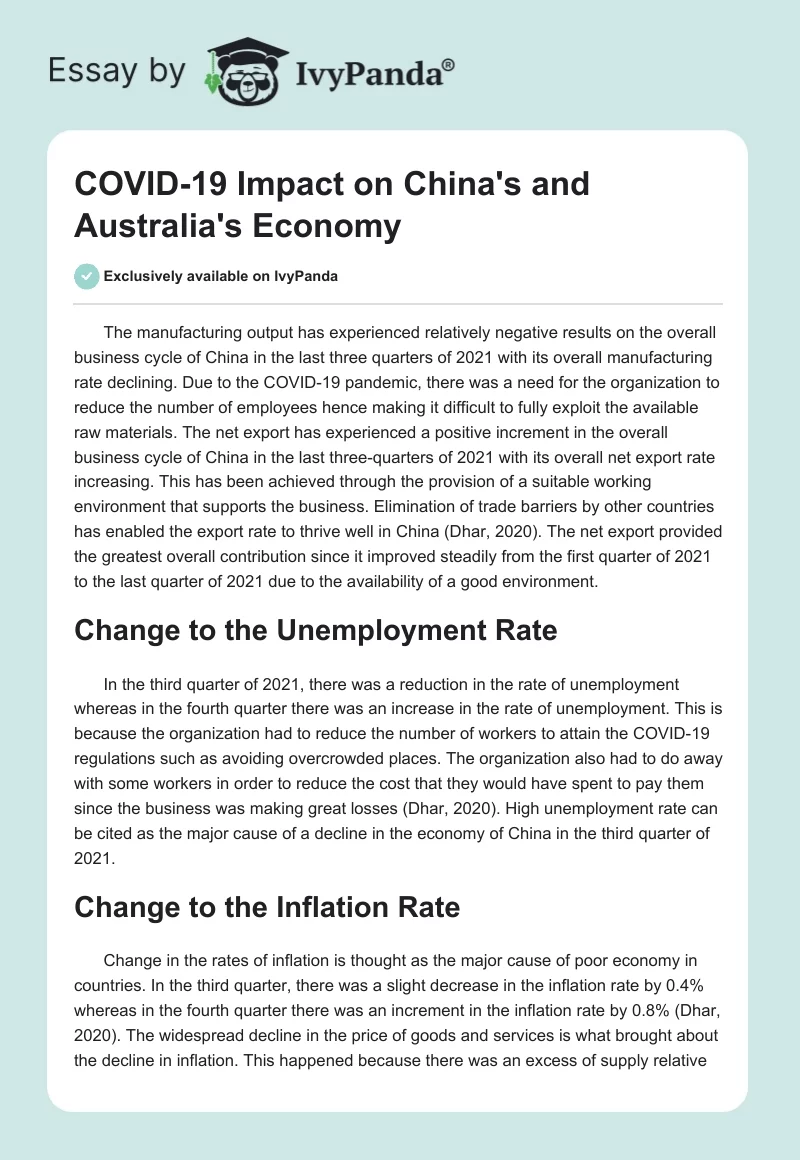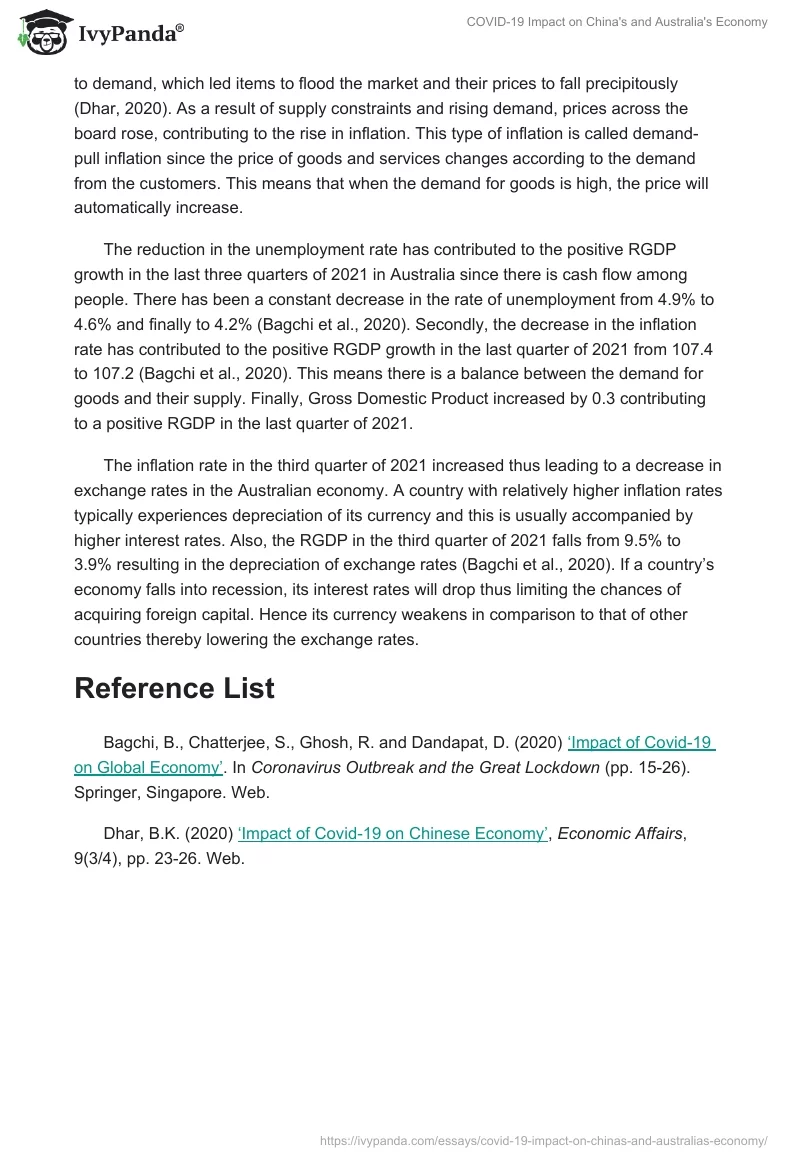The manufacturing output has experienced relatively negative results on the overall business cycle of China in the last three quarters of 2021 with its overall manufacturing rate declining. Due to the COVID-19 pandemic, there was a need for the organization to reduce the number of employees hence making it difficult to fully exploit the available raw materials. The net export has experienced a positive increment in the overall business cycle of China in the last three-quarters of 2021 with its overall net export rate increasing. This has been achieved through the provision of a suitable working environment that supports the business. Elimination of trade barriers by other countries has enabled the export rate to thrive well in China (Dhar, 2020). The net export provided the greatest overall contribution since it improved steadily from the first quarter of 2021 to the last quarter of 2021 due to the availability of a good environment.
Change to the Unemployment Rate
In the third quarter of 2021, there was a reduction in the rate of unemployment whereas in the fourth quarter there was an increase in the rate of unemployment. This is because the organization had to reduce the number of workers to attain the COVID-19 regulations such as avoiding overcrowded places. The organization also had to do away with some workers in order to reduce the cost that they would have spent to pay them since the business was making great losses (Dhar, 2020). High unemployment rate can be cited as the major cause of a decline in the economy of China in the third quarter of 2021.
Change to the Inflation Rate
Change in the rates of inflation is thought as the major cause of poor economy in countries. In the third quarter, there was a slight decrease in the inflation rate by 0.4% whereas in the fourth quarter there was an increment in the inflation rate by 0.8% (Dhar, 2020). The widespread decline in the price of goods and services is what brought about the decline in inflation. This happened because there was an excess of supply relative to demand, which led items to flood the market and their prices to fall precipitously (Dhar, 2020). As a result of supply constraints and rising demand, prices across the board rose, contributing to the rise in inflation. This type of inflation is called demand-pull inflation since the price of goods and services changes according to the demand from the customers. This means that when the demand for goods is high, the price will automatically increase.
The reduction in the unemployment rate has contributed to the positive RGDP growth in the last three quarters of 2021 in Australia since there is cash flow among people. There has been a constant decrease in the rate of unemployment from 4.9% to 4.6% and finally to 4.2% (Bagchi et al., 2020). Secondly, the decrease in the inflation rate has contributed to the positive RGDP growth in the last quarter of 2021 from 107.4 to 107.2 (Bagchi et al., 2020). This means there is a balance between the demand for goods and their supply. Finally, Gross Domestic Product increased by 0.3 contributing to a positive RGDP in the last quarter of 2021.
The inflation rate in the third quarter of 2021 increased thus leading to a decrease in exchange rates in the Australian economy. A country with relatively higher inflation rates typically experiences depreciation of its currency and this is usually accompanied by higher interest rates. Also, the RGDP in the third quarter of 2021 falls from 9.5% to 3.9% resulting in the depreciation of exchange rates (Bagchi et al., 2020). If a country’s economy falls into recession, its interest rates will drop thus limiting the chances of acquiring foreign capital. Hence its currency weakens in comparison to that of other countries thereby lowering the exchange rates.
Reference List
Bagchi, B., Chatterjee, S., Ghosh, R. and Dandapat, D. (2020) ‘Impact of Covid-19 on Global Economy’. In Coronavirus Outbreak and the Great Lockdown (pp. 15-26). Springer, Singapore. Web.
Dhar, B.K. (2020) ‘Impact of Covid-19 on Chinese Economy’, Economic Affairs, 9(3/4), pp. 23-26. Web.


